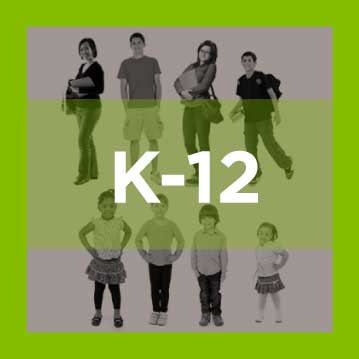Along with many new policymakers elected in 2016, states had varying education policy measures on the ballot. Voters in at least 17 states considered 26 education-related ballot measures focused on education, including early learning, K-12, postsecondary and school funding.
Citizen initiatives – Twenty-four states have an initiative process which enables citizens in addition to their state legislatures to place proposed statutes and, in some cases, constitutional amendments on the ballot.
Legislative referendum – A legislative referendum, which all 50 state legislatures have the ability to use, refers a ballot measure that is passed by the legislature to the voters for approval. Legislative referenda can include changes to the state constitution, bond measures and statewide tax changes that must be approved by voters.
Measures that Passed – At least 18 of the 26 education-related ballot measures in various states passed. Some of the successful education measures are highlighted below.
California voters approved several education-related measures in 2016 including:
- Proposition 58, reversing restrictions on bilingual education. Proposition 58 amends and repeals provisions of Proposition 227, which was approved by voters in 1998. California’s new proposal returns flexibility to school districts to implement English-language programs. It also encourages districts to offer dual-language programs for native English-speakers. Approximately 1.4 million public school students who are English learners will be immediately affected by the election results. In addition, with the rising demand for dual-language programs, the number of English-speaking students served could be higher.
Voters in the Golden State also approved three funding measures:
- Proposition 51, which authorizes $9 billion in general obligation bonds for new construction and modernization of K-12 public school facilities, charter schools, and vocational education and California Community Colleges facilities.
- Proposition 55, which extends temporary personal income tax increases and allocates funding for education.
- Proposition 56, which increases tobacco taxes benefiting education research.
Maine voters approved Question 2, which adds a 3 percent income tax surcharge to fund education. Households with incomes greater than $200,000 will pay a 3 percent tax on the portion of income that exceeds that threshold.
New Mexico voters passed two bond measures which support education:
- Bond Question B issues up to $10,167,000 in library acquisition bonds to make capital expenditures for academic, public school, tribal and library resource acquisitions.
- Bond Question 3 issues up to $142,356, 000 in general obligation bonds for higher education, special schools and capital improvements and acquisitions.
Oregon voters passed four out of five education-related ballot measures this year.
- Measure 95 amends the state constitution to ensure public universities are eligible to invest in equities, which is currently prohibited.
- Measure 96 dedicates 1.5 percent, or a predicted $9.3 million annually, of state lottery proceeds to veteran support services including veterans’ education.
- Measure 98 requires the state Legislature to fund dropout prevention and career and college readiness programs in public high schools across the state.
- Measure 99 creates an Outdoor School Education Fund financed by the Oregon state lottery to provide every fifth- or sixth-grade student an opportunity to attend a week-long outdoor school program.
Measures that Failed – At least eight of the 26 education-related ballot measures were rejected by voters. Some of the education measures rejected by voters are highlighted below.
Georgia voters rejected Amendment 1, which would have amended the state constitution to allow the state to takeover chronically failing schools. If passed, it would have triggered legislation passed last year by the General Assembly that would have created an Opportunity School District to manage the state’s lowest-performing schools. The state-run district would have been run by its own school superintendent appointed by the governor.
Massachusetts voters rejected Question 2, which would have approved raising the state’s cap on charter schools. The Bay State caps the total number of charter schools in the state to 120. If passed, the initiative would have allowed the state to authorize 12 new or expanded charter schools to open annually. This was the most expensive ballot initiative in the country with at least $35 million reportedly raised by both sides. It also drew national attention to the longstanding debate over charter schools.
Oklahoma voters rejected State Question 779, which proposed raising the state sales tax by a percentage point to improve public education. If approved, the funding would have been allocated for a myriad of purposes with more than half of the funding going to increase teacher salaries.
Oregon voters rejected Measure 97, a tax increase on corporations with more than $25 million in annual sales. If passed, it would have raised nearly $3 billion per year with some of the new revenue going to pre-K through 12th grade public education.
Colorado voters rejected Amendment 72 which would have increased cigarette and tobacco tax from 84 cents to $1.74 per pack. A portion of the funds generated would have gone to a fund for student loan debt repayment and professional training for medical professionals. Missouri voters also rejected Amendment 3, a cigarette tax for early childhood health and education. At least 75 percent of the revenue generated would have gone towards increasing access to early childhood education programs.
For full state ballot measure coverage, visit the National Conference of State Legislatures State Vote 2016. Make sure to also check out our blog and accompanying infographic on Changes in State Education Leadership.
Thanks to the state relations team and many Education Commission of the States staff who contributed to this blog post.








